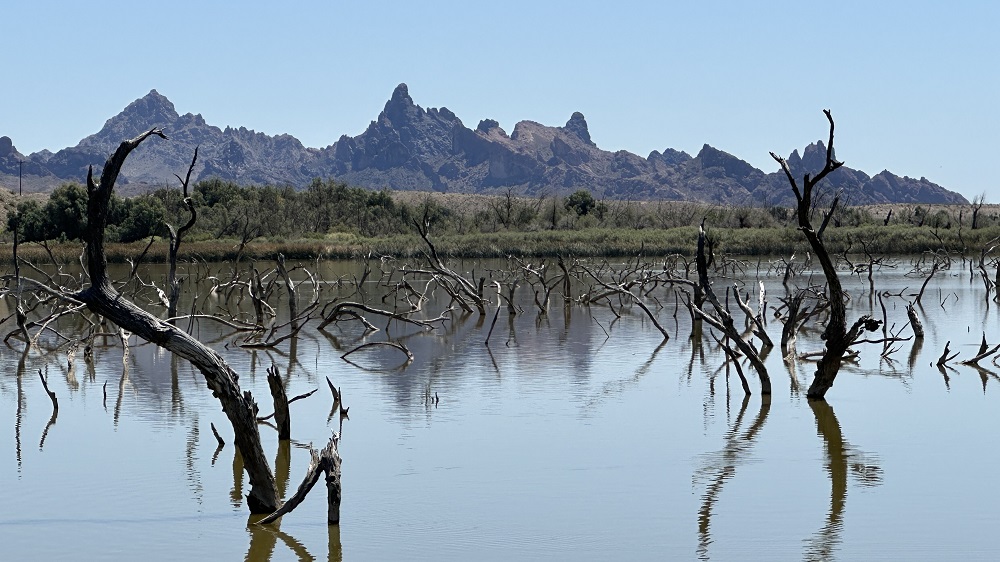
Scattered throughout the reedy water, long-dead skeletal remains eerily reach up from below the surface of the marsh. Mostly dry and bleached from years of exposure to the sun, tree stumps from a long-dead mesquite forest show moister, darker rings exposed by dropping water levels.
As coyotes, bobcats and foxes search for an early morning meal, the whistly calls of numerous birds are one of the few sounds that break the silence of Topock Marsh. Nestled on the Arizona side of the Colorado River across from Needles, California, the 4,000 acre marsh has felt the impacts of the region’s long-term drought.
Without serious intervention, the marsh and its inhabitants might have faced a future as bleak as that of the mesquite forest that dominated the area before a portion of the Colorado River channel moved west, allowing for the marsh’s creation in 1966.
After declining river levels left Topock Marsh’s water delivery system dry for much of the year, the Bureau of Reclamation allocated $20 million in fiscal year 2024 from the Bipartisan Infrastructure Law to ensure it will have a continuous supply in the future.
“The current intake system relies on river levels being high enough to reach the inlet canal,” explained Reclamation Supervisory Engineer Jan Miller. “We knew that in order for the marsh to receive its allotment of water we were going to have to construct a pumping system that could deliver water even when river levels were low.”
Part of the Havasu National Wildlife Refuge, the marsh is an important habitat for migratory birds as well as home to numerous fish species including Gizzard shad, channel catfish, largemouth bass, black crappie, bluegill, striped bass yellow bullhead, carp and threadfin shad.
While the U.S. Fish and Wildlife Service owns and operates the refuge, Reclamation built the infrastructure that created and maintains the marsh. As the two entities saw water conservation efforts downstream create a drop in the river’s levels, they began preparing to upgrade the infrastructure.
Miller and his team determined that two Archimedes screw-type pumps, about the size of a semi-truck trailer, would have to be installed where the marsh’s inlet meets the Colorado River.
Miller’s team also surveyed infrastructure within the marsh to see if there were other reasons why water levels had fallen. He said they found some things that needed to be addressed to make the system as efficient as possible.
The project will upgrade outlet gates at the south end of the marsh to prevent water from leaking back into the river and will install nine miles of electrical line to power the pumps.
“If funds are available, the existing Fire Break Canal that transports water nearly three miles to the marsh will be replaced with an enclosed pipeline,” Miller said.
The contract should be awarded sometime this year. Miller said he expects the project to be completed as early as January 2027.
